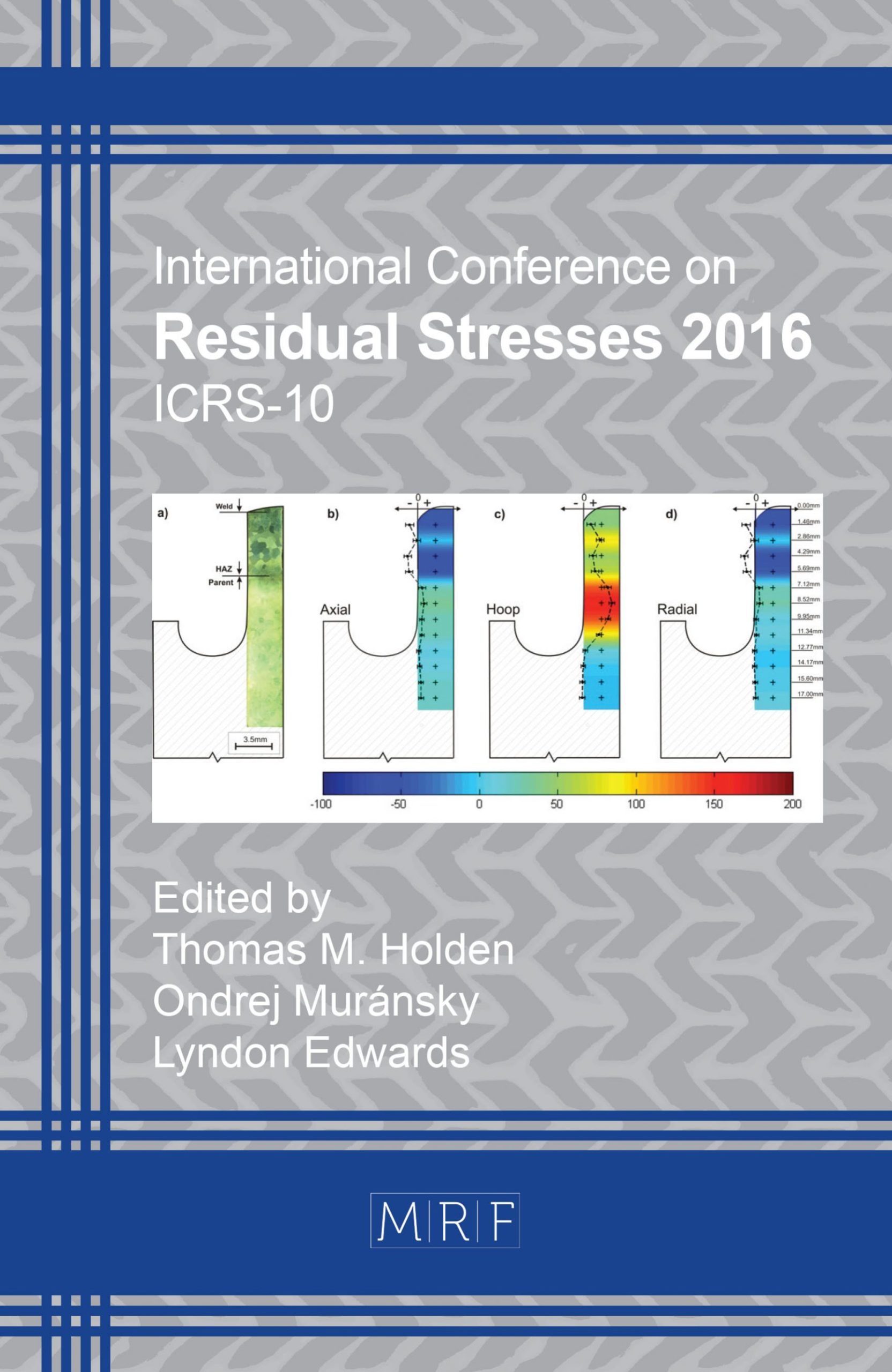Residual Stress Measurement of Ti-Metal Samples by Means of XRD with Ti and Cu Radiation
L. Suominen, T. Rickert, S. Send
download PDFAbstract: The use of titanium in structural components has been growing for years, especially in highly demanding applications in the aerospace industry where quality control is essential. One of the critical properties is fatigue strength, which is strongly affected by residual stresses. Residual stresses may be an unavoidable by-product of the manufacturing process or intentionally imparted through processes like shot peening. X-ray diffraction (XRD) is commonly used for residual stress measurement. Yet titanium alloys are more difficult to measure than other metals like steels and aluminium alloys. Many titanium alloys have a two-phase microstructure, one of them being hexagonal alpha titanium. Also, the commonly used Cu-radiation generates very strong fluorescence, which results in a low penetration depth. Both reduces measurement quality. Ti-radiation is much less frequently used. It benefits from very low fluorescence and a higher penetration depth. This paper compares XRD residual stress measurements using Cu- and Ti- radiation on two titanium grades: Grade 2 and Grade 5 (Ti6Al4V). The samples from both are in the rolled condition and have been shot peened. The x-ray elastic constants were determined by XRD with Cu- and Ti-radiation and samples and residual stress depth distributions were measured up to 0.5 mm depth.
Keywords
X-Ray Elastic Constant Measurement (XEC), X-Ray Diffraction (XRD), Residual Stress, Titanium Alloys, Ti-Radiation, Cu-Radiation
Published online 12/22/2016, 6 pages
Copyright © 2016 by the author(s)
Published under license by Materials Research Forum LLC., Millersville PA, USA
Citation: L. Suominen, T. Rickert, S. Send, ‘Residual Stress Measurement of Ti-Metal Samples by Means of XRD with Ti and Cu Radiation’, Materials Research Proceedings, Vol. 2, pp 61-66, 2017
DOI: http://dx.doi.org/10.21741/9781945291173-11
The article was published as article 11 of the book Residual Stresses 2016
![]() Content from this work may be used under the terms of the Creative Commons Attribution 3.0 licence. Any further distribution of this work must maintain attribution to the author(s) and the title of the work, journal citation and DOI.
Content from this work may be used under the terms of the Creative Commons Attribution 3.0 licence. Any further distribution of this work must maintain attribution to the author(s) and the title of the work, journal citation and DOI.
References
[1] M. Rahman, Y.S. Wong and A.R. Zareena, Machinability of titanium alloys. JSME Ser C 2003; 46(1): 107–115.
http://dx.doi.org/10.1299/jsmec.46.107
[2] D.M. Dimitrov et.al., Residual stress evaluation of a high performance machined pre-formed Ti6Al4V part. Procedia CIRP 45 ( 2016 ) 155 – 158.
http://dx.doi.org/10.1016/j.procir.2016.02.049
[3] G. Bruno, B.D. Dunn, Surface and bulk residual stress in Ti6Al4V welded aerospace tanks, Transactions of the ASME Vol. 126, Aug 2004
http://dx.doi.org/10.1115/1.1763932
[4] M.A. Iadicola, T.H. Gnäupel-Herold, Effective X-ray elastic constant measurement for in situ stress measurement of biaxially strained AA5754-O. Materials Science and Engineering A 545 (2012) 168–175
http://dx.doi.org/10.1016/j.msea.2012.02.100
[5] V. Hauk, Structural and Residual Stress Analysis by Nondestructive Methods, Elsevier, 1997 112.
[6] Information on http://www.rtiintl.com/Titanium/RTI-Titanium-Alloy-Guide.pdf
[7] EN 15305:2008 Non-destructive Testing – Test Method for Residual Stress analysis by X-ray Diffraction
[8] V. Hauk, Structural and Residual Stress Analysis by Nondestructive Methods, Elsevier, 1997 135.
[9] I.C. Noyan, J.B. Cohen, Residual Stress Measurement by Diffraction and Interpretation, Springer-Verlag, 1987
[10] A. Bahadur, B. Ravi Kumar and S. Ghosh Chowdhury, Evaluation of changes in X-ray elastic constants and residual stress as a function of cold rolling of austenitic steels, Materials Science and Technology March 2004 Vol. 20
http://dx.doi.org/10.1179/026708304225012170
[11] D. Šišak Jung, L. Suominen, J. Parantainen and C. Hoermann, MYTHEN Detector – Perspectives in Residual Stress Measurements (2014) Adv. Mat. Res. 996, 203-208































